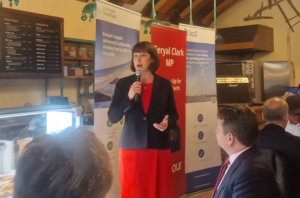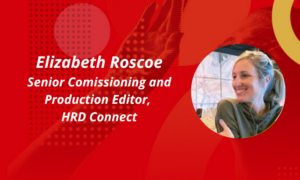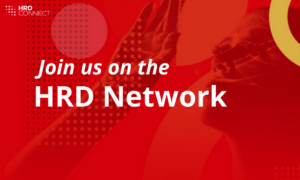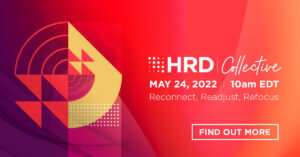Thought leader Nilofer Merchant explores how organisations can give power to ideas
- 5 Min Read
Author, speaker and one of the world’s leading thinkers ranked by Thinkers50, Nilofer Merchant joined HRD Connect to discuss one of her most prominent ideas ‘Onlyness.’ She also reveals how to close the gap between strategy and the execution of ideas. How can organisations give ‘power to ideas’? First it starts with each of us […]
- Author: Unzela Khan
- Date published: Aug 9, 2017
- Categories

Author, speaker and one of the world’s leading thinkers ranked by Thinkers50, Nilofer Merchant joined HRD Connect to discuss one of her most prominent ideas ‘Onlyness.’ She also reveals how to close the gap between strategy and the execution of ideas.
How can organisations give ‘power to ideas’?
First it starts with each of us giving power to our own ideas. How many times have you had an idea come through your mind and thought, if no one else has already said it maybe it’s not worth saying? Yet it’s almost always that perspective that you take which could help in starting the next level conversation. The first thing you have to do is acknowledge that the thought we are standing on offers us advantage point and an angle. So giving permission to ourselves is the first step.
Leaders of organisations should then ask; ‘How do I offer that same permission to you?’ I think it starts with behaviour and saying; ‘I don’t really know where this idea will lead but I have a fresh take, or an unusual take and I would like to explore it with you.’
So give permission to yourself first, as the employee, and then leaders of the organisation need to offer this same permission.
How do you create a safe environment to share and explore ideas?
Safe is such an interesting word, just like we are in relationships or as parents – we know when we feel safe. It’s not just because of what someone else has done, but by how we feel about something. So the question is, what is the context you create as a leader that says it’s okay to take risks here?
One of the most recent stories that I have written about in the book, ‘Onlyness’ was the story about a firm based in Kenya – they were having a complicated set of changes going on at their firm. They said that, it isn’t whether ‘you’re right or I’m right,’ what they said was, whatever happens, we will fix it together.
To me, that one sentence – “we will fix it together” said a lot about what will happen if we fail, what will happen if we take a risk and what will happen if we start something new.
It doesn’t matter if we fail. It only matters that you try and if it doesn’t work out exactly as you hoped and planned, then we can fix it together. To me, any leader can say that to their people, they then create the right context of trust so their people can take risks.
How can HR leaders ensure innovation is not stifled by the creation of human filters generated at any level?
The challenge with all human behaviour is that we all have filters, the question is – do we understand and recognise it? Research says that if we don’t recognise that we have bias within us, we can’t actually fix it. So for all of us as people leaders we need to recognise that we all have bias in some way, and to say “yes we do” – then we can go from there.
Your ‘Invitation to play’ concept was tremendously successful within companies and involved inviting everyone in the company to share their ideas. The process of convincing the leadership team of the programs merit initially was difficult. How did you encourage trust in this process? What lessons learned do you have for HR leaders trying to do something similar?
Whenever I asked an organisational leader to do an ‘invitation to play’ – they resisted it. This was because they wanted to maintain the confidence within them that they were in charge.
However, by shifting them to a place of curiosity and saying; ‘What is it we still need to learn, what is it we still need to add in order for us to find a new way through?’ This requires a different kind of confidence, a trust in one’s self. They need to know that regardless of what happens in the room they will be okay and they will learn. The shift from knowing already, to being curious about what you don’t know is really tempting people to go back to that place where people become more open to welcoming ideas.
How do you start to get rid of the “air sandwich”, and connect all employees to the executive team?
The air sandwich starts at the top of an organisation, where the top executive leadership tells the bottom of the organisation (the people who are going to implement something) what to do. In that gap between that strategy at the top and execution at the bottom is typically what I call the ‘air sandwich.’
Just like a peanut butter sandwich, all of the nice stuff that makes that sandwich good is missing.
In an organisation, what it is missing is common understanding, good listening, trade-off discussions and the negotiations that need to happen. In order for people to understand how things can work, they need to tie in to a really high-level vision.
The way we close this air sandwich is to have the people in the room who will make a direction into reality, and them be the ones to set direction with you. All of a sudden you are making the trade-offs and discussion a part of this strategic direction.
___________________________________________________________
Interested in hearing more from Nilofer Merchant? Join her at the HRD Summit in Birmingham on the 6-7 February 2018









